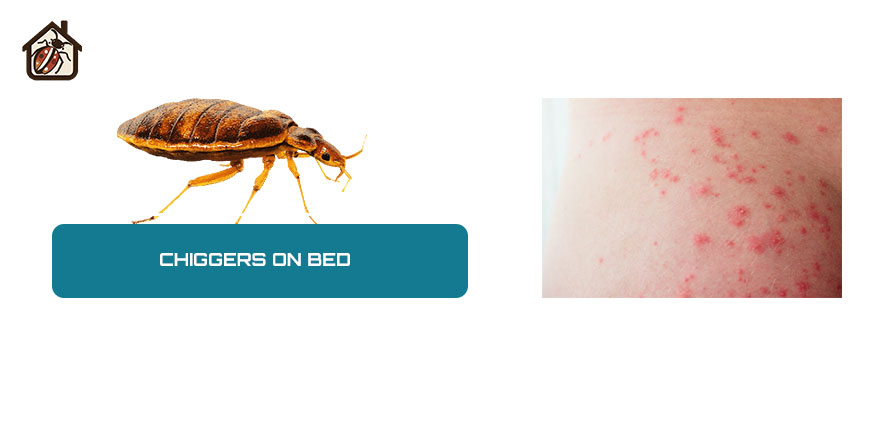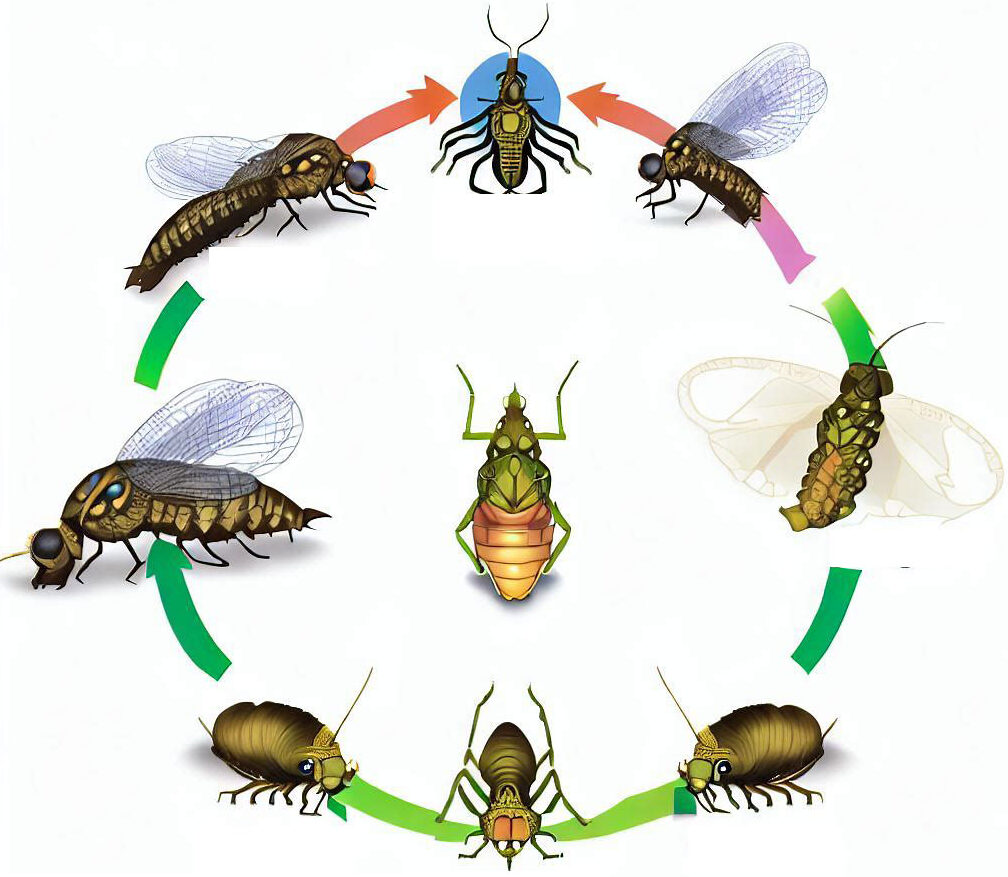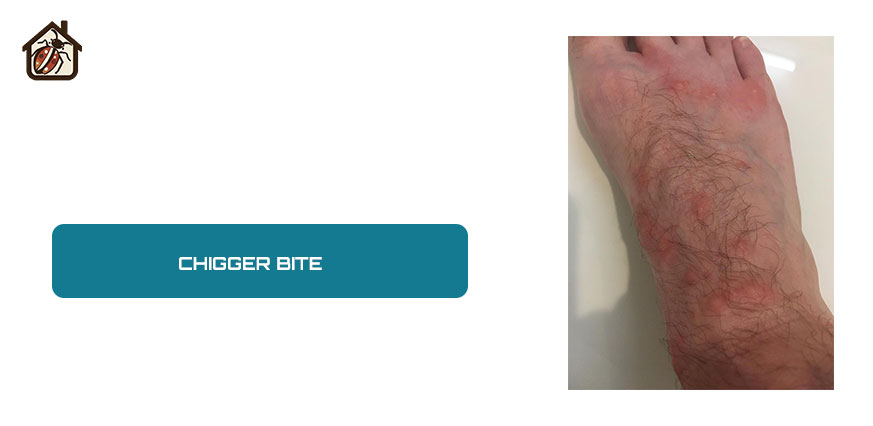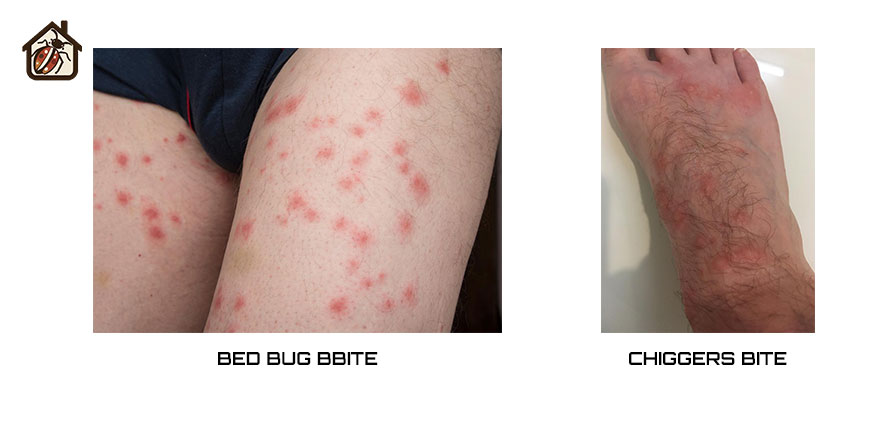 Chiggers on Bed: We’re addressing a subject that would make everyone uncomfortable: Chiggers. Yes, you did read that correctly. Those annoying chiggers can occasionally infiltrate our bedroom quarters as well, so it’s not just mosquitoes and bedbugs that we need to be concerned about.
Chiggers on Bed: We’re addressing a subject that would make everyone uncomfortable: Chiggers. Yes, you did read that correctly. Those annoying chiggers can occasionally infiltrate our bedroom quarters as well, so it’s not just mosquitoes and bedbugs that we need to be concerned about.
Whether you want to believe it or not, these little monsters may find their way into your bed. When you’re outside, it’s possible for chiggers, those tiny mites that adore grassy environments, to land on your skin or clothing. If you don’t catch them and check your bed carefully before going to sleep, they can decide to join you for an uncomfortable sleepover. So let’s get started on what you need to know to keep bed bugs at home.
What are Chiggers?
The young form of some mite species, commonly referred to as chiggers, berry bugs, or harvest mites, is most frequently observed in grassy and forested regions, along riverbanks, and in gardens. Due to their tiny size—less than 1/150th of an inch—these tiny bugs are invisible to the human eye.
Despite their tiny stature, chiggers are notorious for causing discomfort. When chigger larvae come into contact with human skin, they don’t burrow into your skin like some urban legends suggest. Instead, they use their specialized mouthparts to create a small, painless opening in the skin. Through this opening, they inject saliva containing digestive enzymes, which break down skin cells, creating a feeding tube known as a “syclostome.” It’s this syclostome that causes the itching and irritation we associate with chigger bites.
The life cycle of chiggers

The life cycle of chiggers
The life cycle of chiggers, also known as harvest mites, involves several stages as they transition from egg to adult. Here’s a detailed explanation of their life cycle:
- Egg Stage: Adult females lay eggs in soil or suitable environments in late summer or early fall.
- Larval Stage: Tiny six-legged larvae hatch from the eggs in spring.
- Feeding and Development: Larvae feed on hosts, including humans, during warm and humid periods, necessary for their development.
- Nymph Stage: After feeding, larvae drop off hosts and molt into nymphs, gaining eight legs.
- Selective Feeding: Nymphs feed again, preferring insects or small animals.
- Molting: Nymphs molt into adult chiggers with eight legs.
- Adult Stage: Adult chiggers focus on mating | Females lay eggs to restart the life cycle.
The active stages are the larvae and nymphs, which can encounter hosts, including people, during their feeding phases. Preventive measures are crucial to minimize interactions and potential chigger bites during these active periods.
Where Do chiggers Come From?
They usually occur in regions with a lot of vegetation, such as grassy fields, woodland areas, gardens, and the edges of bodies of water. They are most active in hot, humid weather, so late spring and summer are the best times to see them. Chiggers frequently wait about in tall grasses and bushes for a good host to walk by. While they do consume a variety of tiny creatures during their growth, including rodents, birds, and insects, they can also come into touch with people when they visit their habitats. Chigger larvae may adhere to human skin as a result of standing in tall grass, sitting on the ground, or even wearing clothes that rub up against contaminated flora.
Additionally, these larvae can hitch a ride on clothing, pets, or other objects, allowing them to be transported from one area to another. Importantly, chiggers do not typically establish long-term infestations on humans or indoors: they cause temporary discomfort through their bites.
Chigger bite symptoms

Chigger bites look like
Chigger bites can cause a range of uncomfortable symptoms, primarily due to the body’s reaction to the saliva injected by the chiggers as they feed. Here are the typical symptoms associated with chigger bites:
- Intense Itching: Perhaps the most notorious symptom of a chigger bite is the intense itching that often occurs within a few hours after the bite. The itching can be maddening and is usually localized around the bite site.
- Red Bumps: Chigger bites often appear as small, red, raised bumps on the skin. These bumps might resemble small pimples or welts.
- Blister-like Lesions: In some cases, chigger bites can develop into tiny, fluid-filled blisters, especially if the bites have been scratched or irritated.
- Swelling: The affected area may become slightly swollen due to the body’s immune response to the chigger’s saliva.
- Rash: In more severe cases or when there are multiple bites nearby, a rash can develop, leading to a larger area of redness and discomfort.
- Skin Irritation: The skin around the bite site may become irritated, red, and inflamed, especially if the bites are scratched or if the chiggers are left on the skin for an extended period.
chigger larvae do not burrow into the skin as often believed: rather, they create a feeding tube (syclostome) by breaking down skin cells, which is what causes the itchiness and irritation. The bites typically occur in areas where clothing is snug or where the skin is thinner, such as around the ankles, behind the knees, on the waistline, under tight-fitting clothing, and in the groin area.
How do chiggers bite?
Chiggers do not bite in the conventional sense like mosquitoes or other blood-feeding insects. Instead, they have a unique feeding process that involves skin penetration and the creation of a feeding structure. Here’s how chiggers “bite”:
- Attachment: Chigger larvae cling to the host’s skin using tiny hooked legs when they make contact.
- Skin Penetration: Chiggers lack traditional biting mouthparts: instead, they use sharp mouthparts (chelicerae) to create a small skin opening.
- Saliva Injection: Chiggers inject saliva containing digestive enzymes into the skin through this opening.
- Feeding Structure: The digestive enzymes break down skin cells, creating a feeding structure called a “stylostome.”
- Feeding Process: Chiggers feed on the liquefied skin cells through the stylostome, which stays in the skin for several days.
- Itching and Irritation: The body’s immune response to the chigger’s saliva and the presence of the stylostome lead to intense itching, redness, and irritation in typical chigger bites.
How to Deal With Chiggers on Bed?
Dealing with chiggers in bed can be quite a discomfort. Here’s a concise set of steps to handle this issue:
- Inspect Bedding: Check for chiggers or bites in your bedding, especially the mattress, and sheets.
- Wash Bedding: If you suspect chiggers, wash all bedding in hot water to kill any potential chiggers.
- Vacuum and Clean: Vacuum the bed and surrounding area to remove chiggers or larvae.
- Shake Out Clothes: Before entering the bedroom, shake out outdoor clothes to dislodge any chiggers.
- Shower Before Bed: Take a shower to remove unseen chiggers, especially around ankles and waistline.
- No Shoes in Bed: Prevent chiggers by not allowing shoes in the bed, as they can carry them.
- Use Anti-Itch Cream: Apply over-the-counter anti-itch creams for relief if you have chigger bites, but avoid scratching.
- Consult a Professional: If the problem persists or reactions are severe, seek advice from a healthcare professional.
Are chiggers and bedbugs the same thing?

bed bug bite and chigger bites look like
No, chiggers and bedbugs are not the same: they are entirely different organisms, although both can cause discomfort to humans.
Chiggers: Chiggers are the larval stage of certain mite species. They are tiny, often reddish, and are found primarily in grassy and wooded areas. Chigger larvae do not bite in the traditional sense but pierce the skin to create a feeding tube through which they inject saliva containing digestive enzymes, causing itching and irritation. Chigger bites usually occur in outdoor environments, and chiggers are not known to infest indoor spaces.
Bedbugs: Bedbugs are small, flat, oval-shaped insects that feed on the blood of humans and animals. They are known for infesting indoor areas, especially beds, sofas, and other furniture where people rest. Bedbug bites typically result in red, itchy welts and can cause significant discomfort. Unlike chiggers, bedbugs feed by piercing the skin directly with their mouthparts.
Now, let’s differentiate chiggers and bedbugs based on key characteristics:
| Characteristic | Chiggers | Bedbugs |
| Type | The larval stage of mites | Small wingless insects |
| Size | Very tiny, < 1/150th inch | Adult: 1/4 to 3/8 inch |
| Color | Reddish or orange | Adult: Reddish-brown, younger may be lighter |
| Habitat | Grassy, wooded areas, outdoors | Indoor spaces, beds, furniture |
| Feeding | Create a feeding tube through the skin | Pierce skin to suck blood |
| Bite Reactions | Intense itching, redness, small bumps | Itching, welts, often in clusters |
| Infestation | Not known to infest indoors | Infests in indoor spaces spread rapidly |
Preventing Chiggers on Bed
Here’s the scoop on how to prevent these uninvited guests from showing up in your bed:
- Shake it off: Before you hop into bed, give your clothes a good shake outside. This can help dislodge any chiggers that might be hitching a ride.
- Inspect yourself: Take a quick look in the mirror to make sure you’re not inadvertently bringing any chiggers into bed with you. Check your clothes, shoes, and skin.
- Wash up: Take a shower before bed, especially if you’ve been in areas where chiggers are known to hang out. This helps remove any potential stowaways.
- Keep them out: Consider creating a “no shoes in bed” rule. Shoes can easily pick up chiggers, so leaving them at the door can be a great preventive measure.
- Bedding matters: If you suspect chiggers have made it into your bed, wash your bedding in hot water. High temperatures will take care of any unwanted guests.
You may also like:
- The Uninvited Guests: Dealing with Chiggers on Bed
- Introducing the Game-Changing Bed Bug Detector and Trap
- The Ultimate Guide to Bed Bug Proof Mattress Encasements
- Bugs in the Bed
FAQs:
How can I tell if my bed has chiggers?
Can chiggers infest your house?
How long do chiggers stay on you?
Do chiggers go away on their own?
Are chiggers worse than bed bugs?
Do chiggers wash off in the shower?
Conclusion
Chiggers might be small, but their bites can cause big discomfort. While the thought of chiggers in bed might be a bit unsettling, it’s important to remember that with a little awareness and some simple preventive measures, you can keep these tiny terrors at bay


